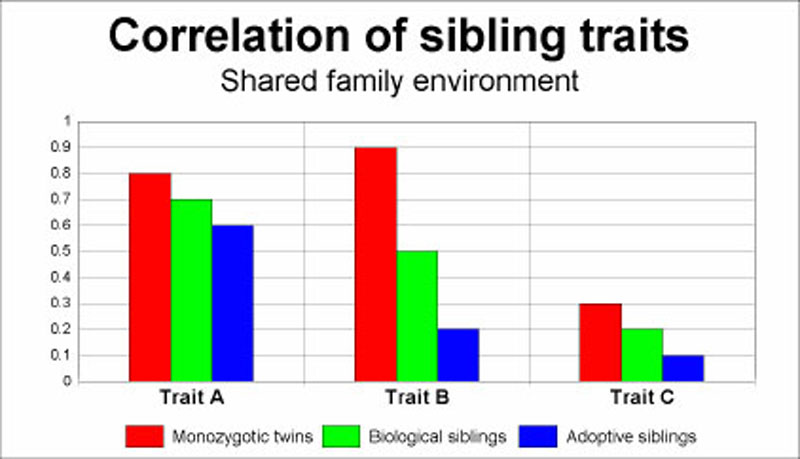Genetics and Behavior
- Instinct or innate behavior is the inherent inclination of a living organism towards a particular complex behavior.
- A learned behavior is a change in the range of organism's actions or mannerisms as a result of experience.
- The adaptive value represents the combined influence of all characters which affect the fitness of an individual or population.
- An adaptation is a trait with a current functional role in the life history of an organism that is maintained and evolved by means of natural selection.
- Natural selection is the differential survival and reproduction of individuals due to differences in phenotype.
- The phrase nature vs. nurture relates to the relative importance of an individual's innate qualities as compared to an individual's personal experiences in causing individual differences, especially in behavioral traits.
- Concordance is the probability that a pair of individuals will both have a certain characteristic, given that one of the pair has the characteristic.
- Considered a key tool in behavioral genetics and in content fields, from biology to psychology, twin studies reveal the absolute and relative importance of environmental and genetic influences on individuals in a sample.
- Monozygotic twins (identical twins) occur when a single egg is fertilized to form one zygote which then divides into two separate embryos.
- Dizygotic twins (fraternal twins) usually occur when two fertilized eggs are implanted in the uterus wall at the same time.
- The adoption study is a classic tool of behavioral genetics. The adoptees method investigates similarities between the adoptees and their biological and adoptive parents. The familial method compares non-biological siblings who are reared in the same household.

This chart illustrates three patterns one might see when studying the influence of genes and environment on traits in individuals. Trait A shows a high sibling correlation, but little heritability (i.e. high shared environmental variance c2; low heritability h2). Trait B shows a high heritability since correlation of trait rises sharply with degree of genetic similarity. Trait C shows low heritability, but also low correlations generally; this means Trait C has a high nonshared environmental variance e2. In other words, the degree to which individuals display Trait C has little to do with either genes or broadly predictable environmental factors—roughly, the outcome approaches random for an individual. Notice also that even identical twins raised in a common family rarely show 100% trait correlation.